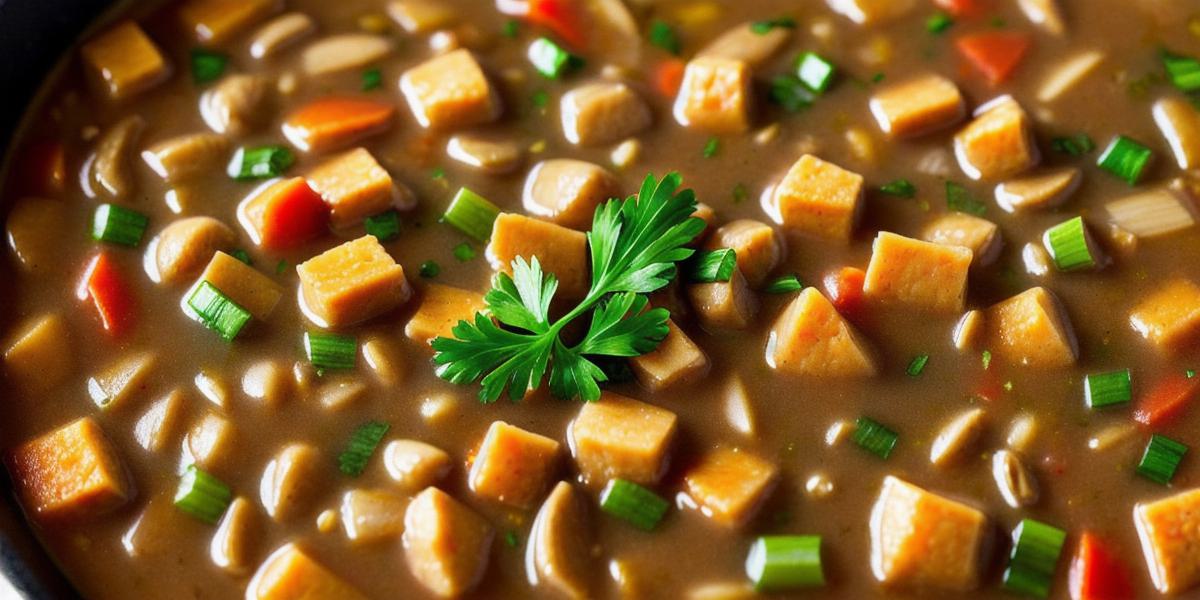The Ultimate Guide to Thickening Gumbo: A Step-by-Step Approach
Gumbo is a classic Southern dish that has been enjoyed by millions of people across the United States. Whether you’re from Louisiana or not, there’s no denying the appeal of this hearty and flavorful stew. But one thing that can make or break your gumbo is its thickness. A soupy gumbo may be delicious, but a watery one lacks the richness and depth that makes this dish so special.
In this guide, we’ll explore the various methods you can use to thicken your gumbo and achieve the perfect consistency. We’ll also discuss the pros and cons of each method, as well as some tips and tricks to help you get the most out of your gumbo-thickening experience.
The Importance of Thickness in Gumbo
Before we dive into the different methods for thickening gumbo, it’s important to understand why thickness is so crucial to this dish. First and foremost, a thick gumbo helps to enhance the flavors and aromas of the other ingredients. When you have a lot of liquid in your pot, it can dilute the flavors and make it harder for the other ingredients to shine through.
Additionally, thickness helps to create a silky texture that is characteristic of gumbo. It also makes the dish more filling, which can be especially important for those who are looking for a satisfying meal. Finally, a thick gumbo can help to prevent the soup from becoming too spicy or too acidic, as these flavors may become overpowering in a watery broth.
The Different Methods for Thickening Gumbo
Now that we understand why thickness is important let’s take a look at the different methods you can use to thicken your gumbo. There are three main approaches: using roux, adding flour, or incorporating seafood.
Using Roux
Roux is a traditional method for thickening gumbo that involves cooking flour in butter or oil until it becomes a deep brown color. This process creates a rich and nutty flavor that is often preferred by those who prefer a more natural approach to their gumbo.
To make roux, start by melting butter or oil in a large pot over medium heat. Once the butter has melted, sprinkle flour into the pot, stirring constantly to prevent lumps from forming. Continue to cook and stir the mixture until it turns a deep brown color. At this point, you can add your other gumbo ingredients (such as onions, peppers, and spices) and continue to cook until everything is well combined and the flavors have melded together.
Adding Flour
Another method for thickening gumbo is to simply add flour to the pot while it’s cooking. This approach can be quicker than making roux, but it may not produce the same rich flavor. To use this method, whisk together flour and water until you have a smooth paste. Once your other gumbo ingredients are cooked through, add the flour mixture to the pot and stir until everything is well combined.
Incorporating Seafood
Finally, seafood can be used as a natural thickener for gumbo. When you cook seafood such as shrimp or oysters, they release natural proteins that can help to thicken the soup. To use this method, simply add your seafood to the pot and cook until it’s cooked through. The proteins from the seafood will naturally thicken the gumbo as it simmers.
FAQs
Q: Can I use cornstarch instead of flour?
A: Yes, you can use cornstarch as a thickening agent in place of flour.
